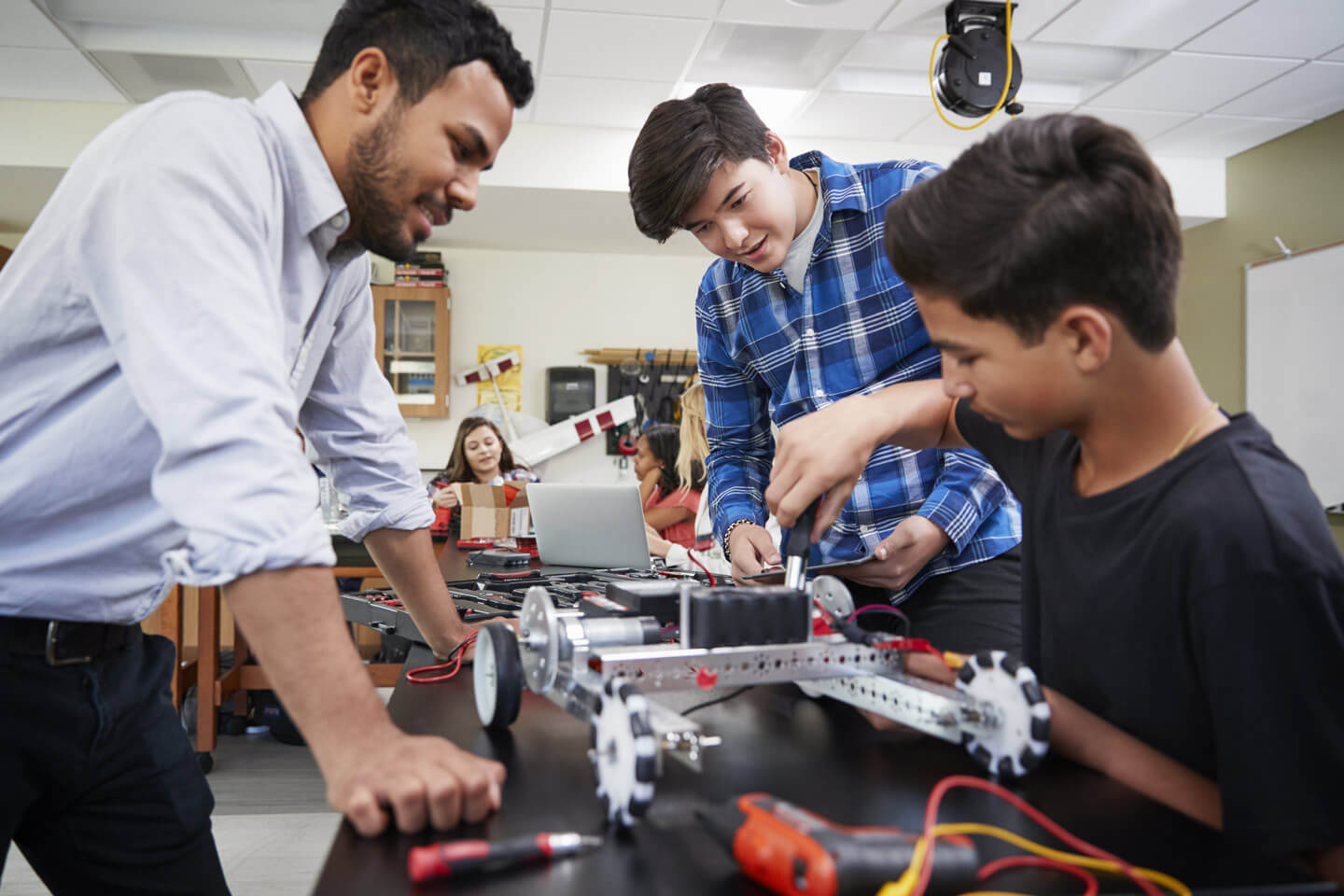Think Like an Engineer: An Activity for Teaching the Engineering Design Process to Students
Teaching your students the engineering design process will help them become better designers.
If you’re teaching engineering design to students, before you dive into computer-aided design (CAD) tools, you’ll likely introduce the engineering design process to them first.
Having a working knowledge of the engineering design process will allow your students to sketch, draft, and design with greater intent. Better yet, it will give them a glimpse into what real-world engineers are considering before they even put pen to paper (or mouse to CAD tool).
In this article, we’ll walk you through everything you and your students need to know about the engineering design process. We’ve also included an engineering design process activity that you can use in your classroom!

What is the engineering design process?
The engineering design process is a series of steps that engineers follow to develop products that solve everyday problems, big or small.
If you do a quick Google search, you’ll quickly discover that there’s a difference of opinion on how many steps there are in the engineering design process. Most commonly, you’ll find there are just six or seven steps.
But at SolidProfessor, we like to be more thorough. Your students should have an understanding of every aspect that goes into the engineering design process — from ideation to product delivery.
Here are the 11 steps in the engineering design process:
- Idea
- Research
- Planning
- Prototyping
- Engineering
- Design
- Branding
- Manufacturing
- Production
- Trials
- Delivery
These 11 steps will not only get your students thinking about the technical engineering aspects of the process, but also ideation, marketing, manufacturing, and supply chain.

Why is the engineering design process important?
Engineering students ask this question a lot: “Why is the engineering design process important?”
The engineering design process is important because without it, engineers could potentially overlook an important consideration. In other words, the engineering design process helps designers refocus and remember their goal: create solutions that solve everyday problems.
What are the steps of the engineering design process?
We’ve already briefly laid out the 11 steps in the engineering design process. Now, let’s take a look at how each step can play out using an example. This is a great exercise to get your students thinking like an engineer!
In our example, a student wants to solve the problem of never being able to find their pet cat.
Step 1: Idea
In the Idea stage of the engineering design process, students should ask themselves “How am I going to solve a particular problem?”
Example: “I’m creating a GPS-enabled collar so I always know where my cat is.”
Step 2: Research
In the Research stage of the engineering design process, students should ask themselves “How am I going to solve a particular problem?”
Example: “My product would be ideal for the approximately 36 million cat owners in the United States.”
Step 3: Planning
In the Planning stage of the engineering design process, students should ask themselves “How am I going to make my product better than the competition?”
Example: “The collar will also collect the cat’s vital signs, like heart rate.”
Step 4: Design
In the Design stage of the engineering design process, students should ask themselves “What will my product look like and what features will it need?”
Example: “I want the collar to be thin and sleek so it doesn’t disrupt the cat’s activities.”
Step 5: Engineering
In the Engineering stage of the engineering design process, students should ask themselves “Is my product design manufacturable?”
Example: “The band is manufacturable but the GPS device will make it bulkier than I expected.”
Step 6: Prototyping
In the Prototyping stage of the engineering design process, students should ask themselves “Can I create a prototype, or test model, of my product?”
Example: “I 3D printed a prototype of my GPS tracker to test out on my cat.”
Step 7: Branding
In the Branding stage of the engineering design process, students should ask themselves “How will I make my product stand out in the industry?”
Example: “My product is for adventurous cat owners who expect the unexpected.”
Step 8: Manufacturing
In the Manufacturing stage of the engineering design process, students should ask themselves “Can my product be manufactured in a cost-efficient way?”
Example: “The GPS portion must be made with more affordable plastic to be cost-efficient.”
Step 9: Production
In the Production stage of the engineering design process, students should ask themselves “Does my product meet quality standards when mass produced?”
Example: “The latch breaks easily when mass produced, so I have to update the design.”
Step 10: Trials
In the Trials stage of the engineering design process, students should ask themselves “Does my product comply with the regulator requirements for its industry?”
Example: “The collar was approved by the American Pet Products Association.”
Step 11: Delivery
In the Delivery stage of the engineering design process, students should ask themselves “How will I get my product in the hands of customers?”
Example: “I will start by manufacturing 1,000 units to be sold through an online store.”
Thinking through the engineering design process is a great exercise for your students. It challenges them to identify a problem, come up with creative solutions, research their ideas, and figure out how to turn them into reality.
TRY IT WITH YOUR STUDENTS: Download a free PDF of this engineering design process exercise.

























